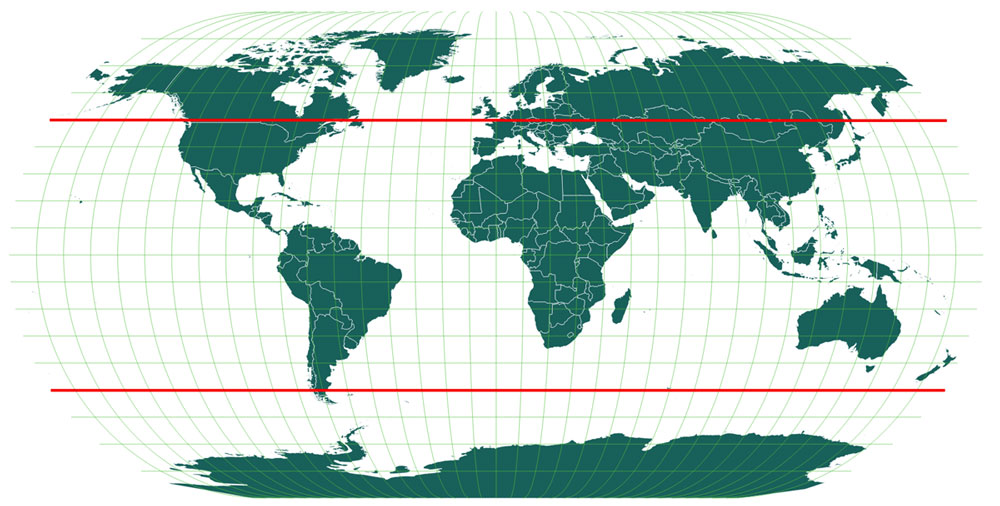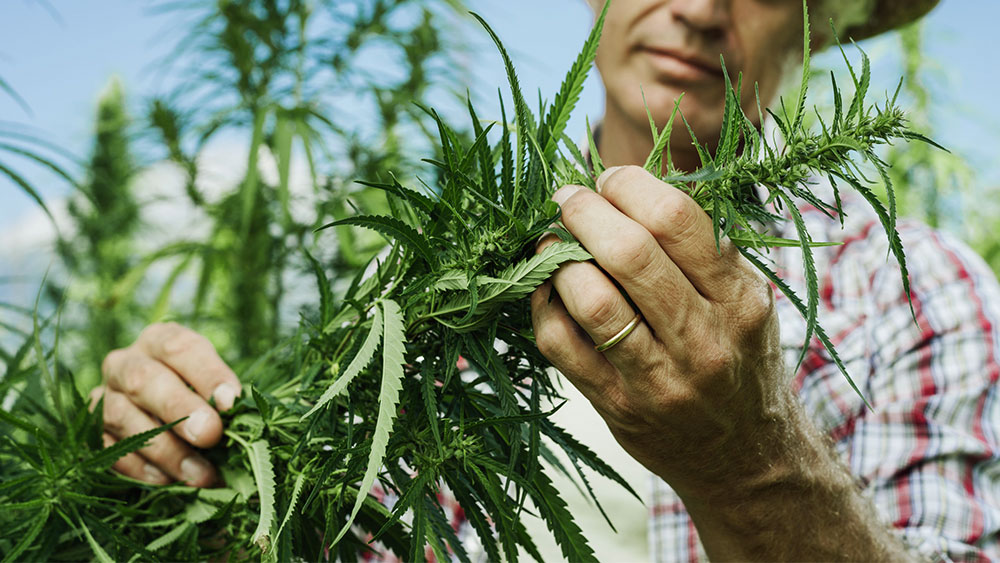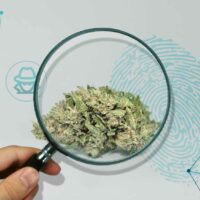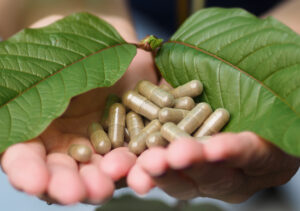Landrace strains are cannabis strains that are indigenous to a certain area of the world, which is coincidentally how some of the popular strains from today get their names.
Landrace strains are confusing to many, since there’s not nearly enough applicable cannabis education around the world.
These strains actually set the bar for growers and breeders around the world, but also give them a platform on which they can build upon.
Botanists believe that cannabis was first grown and domesticated in the Middle East several thousand years ago, mostly in the Hindu Kush area which is today on the borders of several countries.

Cannabis is now enjoyed by people on each and every continent, but of course, the bud we are consuming today isn’t the same that was first grown and domesticated in the Hindu Kush mountain region.
Cannabis strains have evolved and changed in several ways, and so today we have several genotypes of cannabis (sativa, indica, ruderalis and hybrids) and hundreds, if not thousands of phenotypes that are genotype and environment interactions combined.

Image credit: Dinafem Seeds
As you can see from the image above, landrace strains can be considered as the dinosaurs of the cannabis world—they are old, super cool, and you just don’t get to see them in their original form anymore.
There’s been a lot of natural cross breeding and inbreeding with these old strains, resulting in landraces either losing quality genetics or their potency severely dropping due to poor agrarian habits of growers.
For some strains, such as G13, we’re not even sure if they were engineered and bred in a laboratory or if they are perhaps one of the true landraces that used to dominate vast regions.
Lots of actual landrace strains were brought to Europe and America in the 60’s and 70’s for commercial use, especially through the Hippie Trail which led across the Middle East and through central Europe, all the way to the UK and later US.
US soldiers also brought back tons of seeds from landrace strains harvested in East Asia, as the Vietnam War was raging at the same time the Hippie Trail was one of the main smuggling routes.
What are landrace strains?
Landrace strains are cannabis phenotypes that are unique and native for certain areas of the world.
Good examples of landrace strains are:
- Lamb’s Bread from Jamaica
- Hindu Kush from the Middle East
- Swazi Gold from South-Central Africa.
These strains are pure sativas and indicas, which gives them a unique genotype—genetic constitution of each strain in particular.
When I say genetic constitution, I don’t mean just THC and CBD levels.
No, what I mean by genetic constitution is their ability to grow well in their natural habitats, and to continue doing so when crossed with other landraces, especially when put in different habitats.
Since cannabis can grow almost anywhere up to 50° latitude North and South, these strains can grow in a variety of habitats—warm, cold, humid, arid, you name it.
Of course, landrace strains that are used to living high up in the mountains with no humidity and warmth aren’t going to grow and perform well when put in a hot and humid environment.
This is one of the biggest flaws of landrace strains—They adapt extremely poorly to the environment.
They are praised, however, for their ability to grow extremely well in areas even remotely resembling their natural habitat.
Native areas of landrace strains
Landrace strains can live anywhere up to 50° latitude North and South, which is a pretty wide belt around the equator.
Let me put that into perspective for you:
The 50th parallel North, which marks the 50° of latitude North from the equator, passes through the following countries: France, Belgium, Czechia, Poland, Ukraine, Russia, Mongolia, China, Canada and the UK.
It completely jumps over the continental US.

On the other side, the 50th parallel South pretty much swallows the whole continents of South America, Africa and Australia, even New Zealand as it passes below each of these.
Various cannabis strains that initially grew in specific parts of the world quickly spread through the rest of the world in the New Age, as Europeans colonized the world.
Landrace strains are still present in countries and areas they first came from, however in smaller numbers and with slightly diluted genetics.
There are 6 major areas that are characteristic for the landrace strains they gifted to the world.
Central Asia
This area is located around the Hindu Kush mountains, which famously birthed many fan-favorite indica strains.
The Hindu Kush mountains are on the border of today’s Afghanistan, Pakistan, northmost India and Tajikistan.
Hindu Kush, Afghani, and Mazar I Sharif are just some of the most popular landrace strains that come from this area, which is famous for its durable indica strains.
Southeast Asia
The southernmost part of India, Nepal, Cambodia, Thailand, Laos and Vietnam are all a part of this area known for the Thai landrace, which gave genetics to hundreds of today’s popular strains.
Cambodian, Nepalese and Thai landraces are pure sativa strains.
Strains such as Aceh, Luang Prabang and Thai are native to this area, and they tend to grow huge.
They gained in popularity under the name “Thai sticks” which were world-renowned for their strength.
Lately there was a lot of speculation that those sticks were heavily laced with opium, which isn’t inconceivable at all.
South-Central Africa
Strains that are native to this area have just recently gained in popularity.
It is possible that some of these genetics have been brought over to the Caribbean area during the colonization period.
Most popular strains from South-Central Africa are Swazi Gold, Rooibaard, Kilimanjaro, Malawi and Durban Poison, which is today one of the most popular pure sativa landrace strains.
North Africa and Middle East
Cannabis has been a part of the Arabian Culture for centuries, which can be seen in its presence in both North Africa and the Middle East.
This area is known for being the only other area in which indica landrace strains grow natively, although it is theoretically possible that they were brought there in the past.
Plants grown here are often used for kief extraction in order to make some of the best hash in the world.
Central America
Central American strains have been growing in popularity over the last several years as they are known to be durable in a multitude of weather conditions.
All strains found in this area are known to be very potent sativas that give their users energizing highs and make them happy and uplifted.
Some of the most popular strains found in Mexico and the rest of Central America are Lamb’s Bread and King’s Bread (which are local Jamaican strains) and Acapulco Gold—Mexico’s finest.
South America
Some of the most in-demand landrace strains are located in South America.
The reason why there’s such a high demand for these strains is because you have to risk a lot in order to get a couple of seeds.
South America hasn’t been really the safest and most politically stable place on Earth, which is why going around the jungles and mountains looking for cannabis might be a little tricky.
Luckily for us, strains like Colombian Gold, Santa Marta Gold, Punto Rojo, and Limon Verde are now widely available to the public because of fearless strain hunters and breeders that helped keep those genetics alive.
What are heirloom strains?
Another two areas that became known for landrace strains but didn’t have many native strains were Hawaii and California.
In the mid-20th century, growers in these two states grew some of the most amazing landrace plants.
Those plants were later cloned and preserved, due to their extreme potency and good genetics, which is why cannabis fans named them heirloom strains.
Basically, heirloom strains were cut from their mother strains, which also happen to be landrace strains, and during this process they got different names.
Here’s an example: Chocolate Thai came from Thai, but without any genetic crossing or inbreeding. Chocolate Thai came from pure breeding and taking extreme care of the plants.
Here’s one more people might be more familiar today:
Ghost OG may be the strongest strain there is according to recent THC testing, but it has the same genetics as OG Kush.
List of all landrace strains
These landrace indica strains are originally from the Asian continent:
- Hindu Kush
- Afghani
- Lashkar Gah
- Mazar I Sharif
- Pakistani Chitral Kush
- Mag Landrace
- Pakistan Valley Kush
- Pure Afghan
The following indica strains are known as heirloom strains, and they were primarily local to the Hawaiian islands:
- Hawaiian Duckfoot
- Puna Buddaz
- Moloka’i Purpz
These landrace sativa strains are found in South and Central America:
- Lamb’s Bread
- King’s Bread
- Punto Rojo
- Acapulco Gold
- Colombian Gold
- Panama Red
- Limon Verde
The following landrace sativa strains are native to Africa:
- Swazi Gold
- Red Congolese
- Kilimanjaro
- Durban Poison
- Malawi
- Rooibaard
Here’s a list of landrace sativa strains characteristic to Asia:
- Aceh
- Thai
- Chocolate Thai
- Kauai Electric
- Luang Prabang
- Altai (South-Central Russia/Mongolia)
Have in mind that there are sometimes several names for the same strain, which I didn’t take into account. These usually tend to be translations— for example Punto Rojo can be translated as Red Dot.






Jack November 23, 2018 at 7:25 am
Seeking Cambodian Red seeds
Alex November 23, 2018 at 9:42 am
Hey Jack, this website might be a good place for you to look. However, I don't think there is such a strain as Cambodian Red. There is Cambodian, which is a cross of Thai and Haze, and Panama Red which is an American landrace. There is also Red Congolese, which is African. I don't know if any of those two might have been crossed to create Cambodian Red, but if there hasn't been such a cross, feel free to experiment and let us know how it went.
Al July 23, 2021 at 3:31 pm
No. I'm sorry but you are mistaken. Cambodian Red is a phenotype of the Cambodian Landrace. It was well known in the old days.
Rustam February 27, 2019 at 3:15 pm
Alex, thank you very much.
Max Power March 11, 2019 at 8:29 pm
I can remember a strain called Columbian red. Back in the seventies before all the seed banks popped up. Might have been a cross with Panama red. But I remember it.
Alex March 12, 2019 at 9:34 am
Yessir!
Michael July 12, 2019 at 9:48 pm
Red Colombian was all that was easily available in the late 1970's. It was definitely a step down from the previous decade. Growing it is a waste of good dirt.
Wyldogg April 7, 2019 at 10:07 pm
Ran across the best I ever smoked circa 1977-78. Had nothing like it since. Had a taste smell and look that has no comparison. It was seeded yet better than any hybrid I’ve tried this century. Supposedly a Hawaiian. Fat golden buds outside that expanded like balled up cellophane to reveal a vibrant green inside. Very sticky. A small ball rolled to the size of a large bb , two hits at most was all it took. Extremely hypnotizing and psychedelic and at first mildly paralyzing. No chem taste or smell but closer really good hash in aroma. Can you shed some light on what it may have been? I will continue to search this out forever. It was the all time absolute best!
Al July 23, 2021 at 3:35 pm
Puna Budder somewhat matches that description. But there used to be a lot of unique strains in hawaii. Each island typically had at least two, one from the windward side of the island and one from the leeward side of the island. That's the nature of Island chains. Localized environments tend to produce local strains. Notably, Maui Wowie, although certainly originating in Maui, is not a landrace but is a 90/10 Sativa/Indica hybrid bred by a very well known hippie group on the island; out of Mexican Sativas, local Sativas, and an Afghan strain.
mark June 12, 2019 at 12:11 am
Does anyone know what "Badri Heirloom landrace" is? I just got some seeds and now I want to know what to expect.
Adolfo Gonzalez August 21, 2019 at 6:57 pm
With respect, I have to say that I am confused by the concept of 'no landraces can grow beyond the 50th parallel'. Do you mean to say that you will not find too many Narrow Leaf Drug Types beyond this Norther/Southern area? This is true due to the fact that the photo period will not allow for most versions of this variety of plant to finish beyond that Northern point, however, there are numerous landrace varieties that come from beyond the 50th parallel. Altai for example, which is from the Altai district in Siberia or other Siberian varieties (there are many different types) which consist primarily of broad leaf ruderalis offshoots but also some broad leaf drug type varieties that are used by the traditional people of these regions. Also, K. electric is from Kauai, Hawaii, not Asia. I do like the article though and think you've generally done a good job...really not trying to sound like a wise ass, just want to stimulate conversation and maybe I missed something? Saludos!
Danny Levine December 16, 2019 at 4:52 am
As far as Kush strains go, I heard that there is no such thing as Pure/flat out Kush. All Kush belongs to a certain type and there are 3 or 4 landrace heirloom strains of Kush is that true?
E-Z Duz it May 28, 2020 at 6:21 am
Actually I went to my dispensary today having recently watched a show on ppl tracking down certain very rare landrace strains so as with any good smoker you like being educated on everything medical cannabis.. well I was surprised to see that I actually bought a sugar wax called pakisitani valley and it was cool to realize I was smoking a strain that’s probly older older than human life but turning the strain into a cannabis concentrate wax that may have not been done by any other cultivators. Super cool to smoke sumthin that lived on this earth way before learning to properly give the plant exact specifications and amounts of water and nutrients that all good growers have their own way they have found works best for them that has proven to give them maximum output by trial n error or save a lot of money buy buying another’s recipe that grow medical grade marijuana isn’t unheard of.. everybody has their own preferences though and I wonder if “Oaksterdam University” in Oakland offers classes in learning about breeding strains and finding out which recipe of nutrients, water, and I’m sure growers have other gardening products that is true to the strains they grow.. that’s why I feel finding the best humidity, temperature, amount and what nutrients have tested n tested n then tested some more to make sure I find a great recipe that will work best for all around strains but certain strains will just grow poorly and have u questioning if u know anything.. I hear there are classes that have given a fairly simple way to grow your own medicine that they have done years of testing that master growers will have done enough testing to feel I’m going to surprise myself at growing my own real marijuana plant til it flowers and indoor growing and being able to control humidity to cut down on any molding, control the amount of sunlight, how often to water, what nutrients to use and how much and when. Knowing all that information and following it strictly has always left me with plants that produce quite a bit more flower than how much the plants flowered from that “all around recipe” that I used a few times.
Cameron Gillihan September 7, 2020 at 12:28 am
Good read Alex! It’s amazing that the golden age of cannabis is upon us. Thank you for providing a useful and educational read. Now “I” can be the snobby one at the dispensary. Lol, nah good just info to share. Thx again!
damon October 8, 2021 at 6:07 am
Is there any information on north American landrace strains specifically east coast, Virginia area?